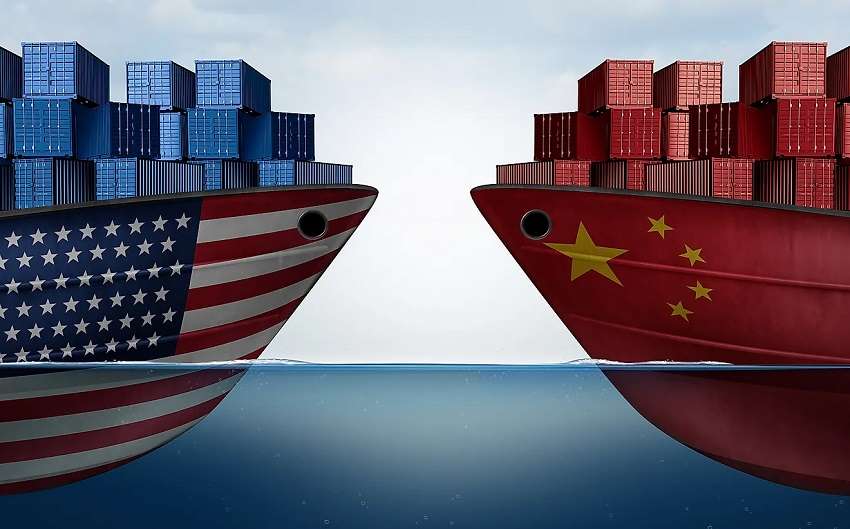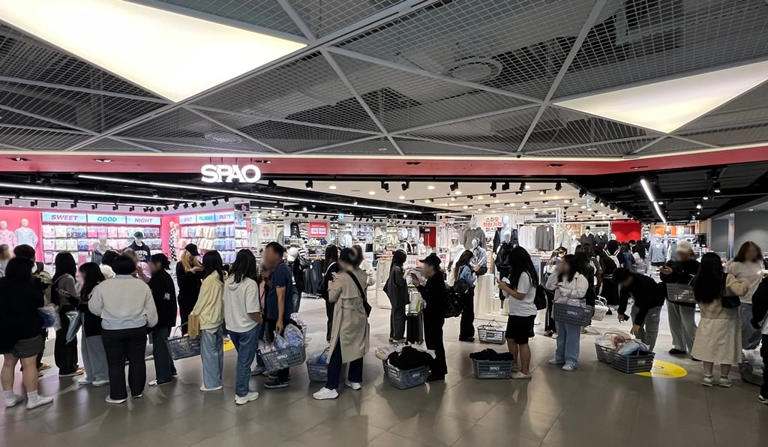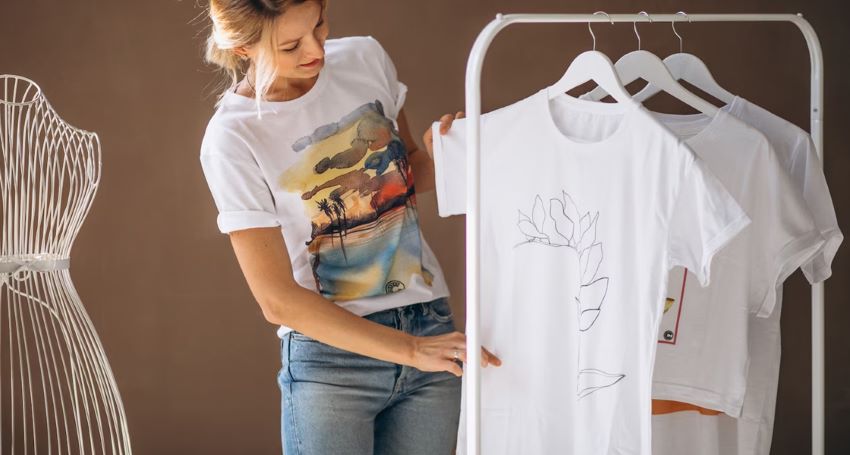FW
Levi Strauss & Co. won the first ITMA Sustainable Innovation Award, clinching the ITMA Industry Excellence Award from two other finalists,BertoIndustriaTessile (Italy) and Gebrüder Otto (Germany). Receiving the award at the ITMA 2015 gala dinner on Nov 12, FrankyVangaever, R&D Product Researcher,Levi’s said, "We are very excited to be the first winner of the ITMA award. The success is a testimony of the strong collaboration of two iconic brands – Tonello and ourselves – in pursuit of industry sustainability."
Tonello's technology provided Levi’s an important first step to solving an industry challenge in denim finishing, Levi has started preliminary development work in their Plock facility in Poland, using the Tonello’sNoStone garment washing technology and avoiding the use of pumice stones, as those had environmental, economic and mechanical disadvantages.
Finalist BertoIndustriaTessile is a leading vertically integrated manufacturer of denim products. It leveraged on the Matex Eco Applicator range by ITMA exhibitor Monforts to significantly reduce the amount of liquid needed in finishing denim fabrics, leading to energy savings and a huge reduction in waste water produced.On the other hand, Gebrüder Otto, the other finalist, is a leading yarn manufacturer which implemented Mayer &Cie'sspinitsystems to produce single jersey fabric using up to 35 per cent less energy compared to the conventional process.
Charles Beauduin, President of CEMATEX, who was also on the Industry Excellence Award judging panel, said, "The ITMA Sustainable Innovation Award celebrates the successful collaboration between technology providers and industry users. With both parties working closely together, innovative, yet practical solutions that positively impact the environment and business bottom line can be created. Hence, we hope to continue to encourage more of such industry collaborations.”
For the R&I Excellence Award – Masters category, Jan Vincent Jordan, InstitutFürTextiltechnik of RWTH Aachen University has been announced as the winner.The two other finalists were; Jenifer Schneidereit, HochschuleNiederrhein for her Master's Thesis: 'Sustainable Water Use in Textile Wet Processing: Development of a List of Improvement Measures for a Self-Assessment Tool for Factories', and MoniruddozaAshir, Institute of Textile Machinery and High Performance Material Technology, TU Dresden, for his Master's Thesis: 'Development of Hybrid Woven Structures for Lightweight Applications'.

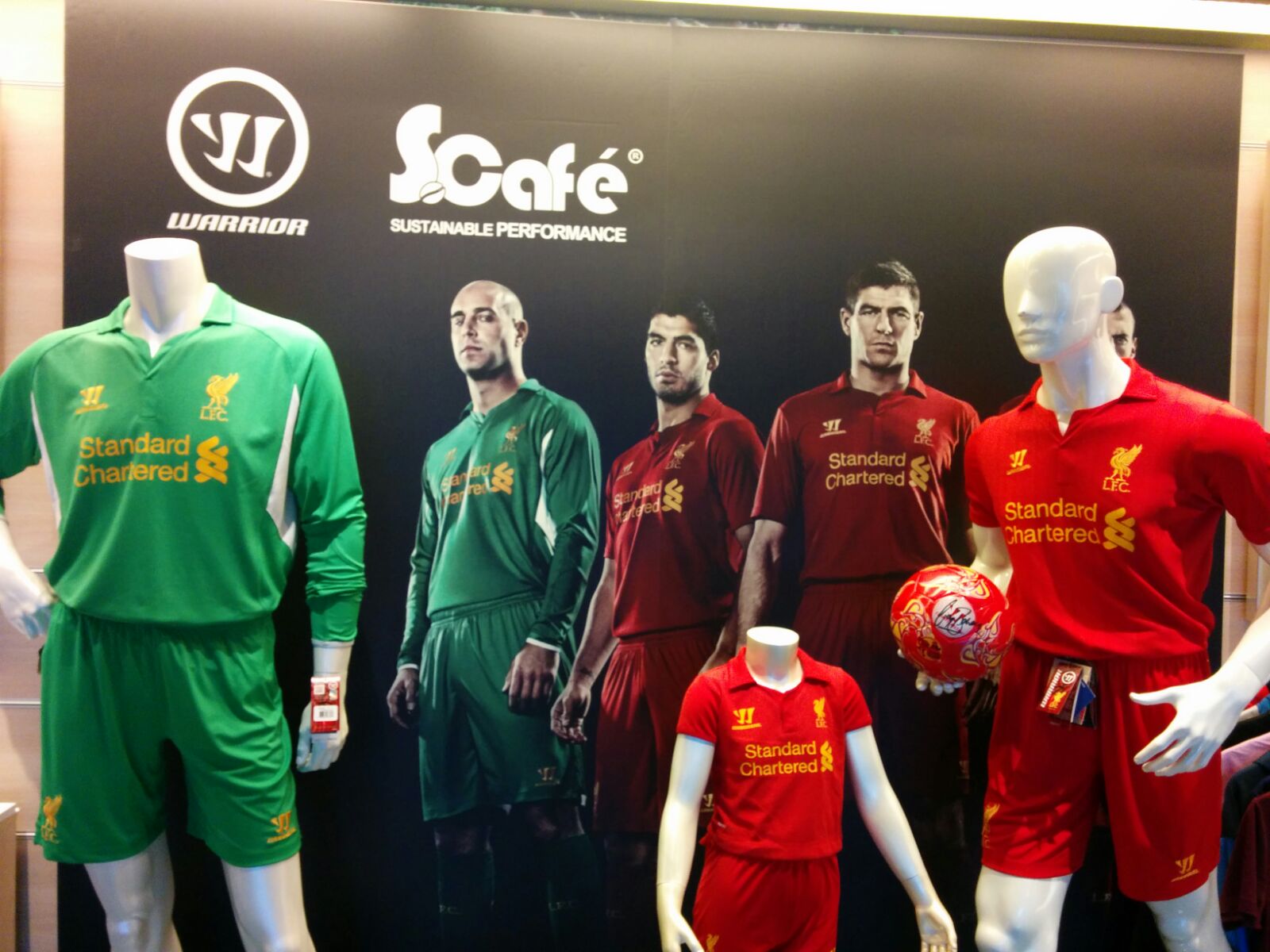
S Café has won ‘Best Invention Award’ at Geneva Inventions and Pittsburgh Invention Gold Medal Award of Merit. Additionally, it has obtained GRS (Global Recycle Standard) certification by Control Union (Holland base notarisation unit) and Recycled Material Certification by TÜV (Germany base notarisation unit).
Focused on innovative fabrics
Singtex is a $50 million company and has been witnessing five to 10 per cent business growth every year. It is now also expanding into garment production and dyeing. Localised customers according to Ching are now increasingly looking for sustainable products such as recycled polyester or recycled properties in fabrics. “This year, the trend is about sustainability. China has a lot of garment factories. Lot of global customers are jumping into the Chinese supply chain and looking for good products. China will continue to grow though at a slow pace. We have a two or three per cent share in the Chinese market. So far our company has focused on the European and US markets. We have just come to China. Next year we think our share will be one percent more.”
Fabrics is the company’s main business. They are mainly wicking fabrics or laminated waterproof fabrics. “The US has a 50 per cent share in our business and Europe has 40 per cent share. The other 10 per cent comes from China and the Asia Pacific. About 10 per cent of our business is driven by yarn and fibres, the rest comes from fabrics,” he adds.
In performance fabrics, some customers look for more stretch. Fabrics are non-spandex but still have stretch. “We do this by construction or by yarn. If we take out spandex, the fabric can have quick dry and wicking. We make tight fit possible without spandex. Non spandex stretch is growing. This trend can be seen in the US, Japan and Europe,” explains Ching.
Sustainable products in demand
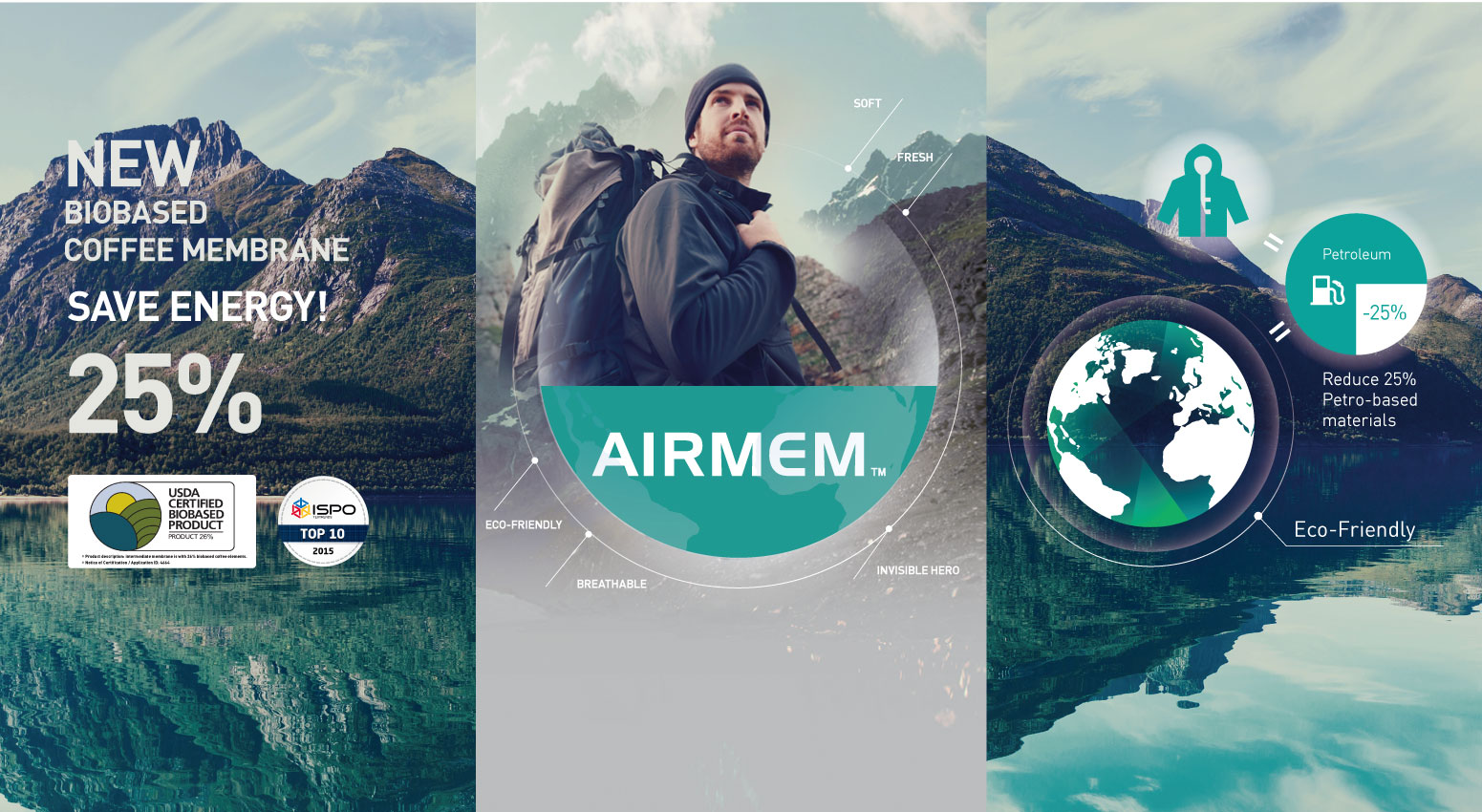
Reiterating Ching’s opinion that most of the brands are now looking for green products, Jason Chen, Chairman, Singtex said, “The business is about finding a good vendor, good fashion. But the product should be environment friendly. The product should be good for the country, good for consumers and good for the land.”
Many countries, he says, have different groups. “I see competition between groups but the competition should be with oneself. That way you will benefit and your products will get better. It’s about products from a good idea, products from a good design. You develop products from your mind. If you do that you have no competition. For instance, TPP is 40 per cent of the global market and I don’t think it will impact the global business. It’s not a competition but a move from some place to other. One day, sourcing destination may even move to Africa or somewhere else. So it is about being prepared, ready. But it is not about being calculative,” avers Chen.
He feels China’s textile industry should undergo a transformation since manufacturing there is shrinking. “They have to change their design thinking. It is not enough to copy. Designs have to be original. And this is a long process. It is about thinking from production to design. But it has to be done. Otherwise there won’t be real development. China’s young generation has a lot of potential. They are capable of doing it. We need to encourage them,” Chen asserts.
www.scafefabrics.com
Vietnam’s textile and garment industry is looking to upgrade itself. It’s considering strategic solutions for enhancing research and promoting the application of advanced technologies to increase domestic garment businesses’ competitiveness.
Fashion design centers will be set up. National textile brands will be formed to make deeper inroads into international markets. The focus is on hastening modernisation and ensuring sustainable growth in order to turn the textile sector into one of the country’s key industries. Events like the Asia Fashion Summit 2015 and an international exhibition on fashion and materials for the garment industry are being planned. These events aim to help bolster links among Asian textile enterprises, offering them a chance to discuss ways to promote garment exports to other countries.
Trade promotion activities, training programs, workshops and conferences will take place. There will be strong liaising activities with foreign organisations. Vietnam’s garment and textile sector has a goal of generating $42 billion in export turnover by 2020, with a localisation rate of 65 per cent. With this aim there will be more investment in weaving, dyeing, completing products and developing supply chains to increase the added value of export products.
The country’s textile and garment sector has seen fast and sustainable growth over the years.
Italy will help Vietnam to open two technology centers for the garment and footwear industries in 2016. Italy wants to help Vietnam improve the performance of garment and footwear sectors. The Italians will equip the upcoming centers with their machinery and technology as well as send experts to train the local workforce.
The centers will be set up at two leading universities. They will receive 15 machines from Italy, which will be used to help train skilled employees for both the Vietnamese and Italian apparel businesses. Italy is Vietnam’s fourth-largest trading partner in the EU, with bilateral trade topping $4billion in 2014, up 17 per cent from a year earlier. As of end of last year, Italy ranked ninth among EU countries, and 28th among foreign investors, in terms of direct foreign investment in Vietnam.
Vietnam and Italy have similarities in small and medium sized business structures and the two countries are discussing options for increasing bilateral trade ties and investment cooperation. Vietnam is among the ten emerging markets Italy has prioritised for developing trade and investment with. Many Italian businesses have plans for long term investment in the Vietnamese market.
Fiber supplier Euro Fibers has been renamed as Prisma. The company is known for high performance fibers like Dyneema, Twaron, Technora, Vectran and Zylon. Rebranding came about because the company is now transitioning to a technology platform with a growing presence and expanding services. It has tripled its coating capacity within a year.
The rebrand is the positive outcome of the company’s broadening footprint in and outside Europe, unprecedented demand, and increasing recognition. The company’s brand Prisma embodies a coating technology that creates innovative solutions to shield high performance fibers. The name Prisma originates from the initial trials conducted when Euro Fibers tried to coat Dyneema fibers. Dyneema is only available in white and with the Prisma coating technology the company can offer it in all colors of the rainbow. The new logo clearly shows all these colors. The stylised shield is a statement in itself with the shield representing the protective features the Prisma coating technology offers to treat high performance fibers.
The new brand identity is a logical step that communicates to both customers and end users that the company continues to provide products and services that consistently outpace its competitors’. With a strong logo, and a clear and distinctive website, the company shows customers why Prisma shielded fibers are the fibers of choice.
India's first industrial hemp start-up Bombay Hemp Company (BOHECO), is run by seven twenty-year-olds, who dream of a green world. Hemp, hardly recognised in India, as it is confused with marijuana, is touted to be a billion-dollar industry in the West. Hemp is hardly consumed in India, unlike a small town in Australia that runs entirely on hemp. Locals in north India use it in their food and to make fibres, but that's about it. Sanvar Oberoi, one of the co-founders says, the Textile Ministry claims that industrial hemp fibre can rake in a potential revenue of approximately Rs 240 crore annually.
Several hemp-based products can be found at BOHECO’s office such as a couple of cream canvas hemp shoes that are still in the works, a neatly packaged crisp, white hemp shirt ready for shipment, bottles of hemp seed oil sit beside packets of hemp seeds, etc.
Romesh Bhattacharji, former narcotics commissioner of India and an advisor to BOHECO explained that hemp is created from the stalk and seed and is a non-narcotic and non-excisable duty item, not from the bud and leaf, which are used to make psychotropic substances. Suman Sahai, founder of the Gene Campaign and an advisor to BOHECO says that the long-term solution for integrating hemp is through development of Indian seeds. The first licence to develop hemp seeds in India in partnership with a government entity is bagged by BOHECO. Kotak stated that they would want to have their own seeds by 2017.
Sustainable clothing options are increasing for those dedicated to the cause. Luxury knitwear made from dead-stock yarns, one-of-a-kind pieces from unwanted locally sourced materials, and a synthetic spider silk parka are some of the latest options. The first product successfully made of synthetic spider silk materials is the Moon Parka. It took 11 years, 10 design iterations, and 656 gene synthesis designs to create it. Spiber, the Japanese advanced biomaterials company in collaboration with The North Face, created the prototype outerwear jacket and expects to deliver the final product in 2016. The product was a result of biomimicry and Spiber’s researchers were inspired by the extremely strong and flexible threads that spiders produce with biological proteins. The synthetic fibre used in the Moon Parka, called Qmonos was due to the development of over a decade. It is produced through an industrial fermentation process that involves micro-organisms producing proteins.
Spiber hopes to revolutionise the apparel industry with Moon Parka as a proof of concept for the spider silk fibre and the company has also set its sights on the automotive and medical device industries for future product development. Focussing on geckos’ sticky toe pads to improve adhesives and recyclability, Ford Motor Company’s researchers are also exploring biomimicry for inspiration.
Eleanor O’Neill, the designer with her Study 34 label is doing her part, where she hand-makes clothing using leftover luxury yarn. O’Neill buys the remnants of high-quality yarns disposed by manufacturers if there is not enough left to produce a complete line of garments. She buys in bulk and produces limited knitwear collections.
President John Mahama’s directive on government's policy on Made in Ghana products is being flouted by the Min¬istry of Education according to certain documents. Fabrics being used for government's free school uniform programme for de¬prived pupils by the ministry are being imported from China. The ministry has rendered a contractual agreement with one of the local textile manufacturing companies, to supply the fabric useless with Printex Ghana.
Now, equipment worth millions of dollars, which the company purchased to re¬tool in anticipation of continuous production of the uniforms, lies idle. In 2009, local textile manufac¬turing companies were empowered by the government, by procuring all its fabric needs from local manufacturers. However, it seems the government has abandoned the plan a few years down the line as the local textile manufacturing companies, to pro¬cure the uniforms from China made huge investments into retooling and installing new ma¬chines to meet the new demand.
The Greater Accra Regional Directorate of the Ghana Ed¬ucation Service released sets of uni¬forms to schools in Metropolitan, Municipality and District Assemblies for onward distribution to pupils in the region, recently. This action has resulted in many in the manufacturing industry doubting the government's commit¬ment to grow the local industry if it continues to import cheap fabric from China at the expense of a weak local textile manufacturing industry.
Secretary General of the Ghana Federation of Labour, Abraham Koomson said that the policy to pro¬cure fabrics locally was to help resusci¬tate the local textile industry and to create jobs and the union was seriously disappointed at the development.
 “Where global industry and economy is facing challenge, the biggest edition opening today, attests ITMA as the trend setting exhibition,” says Charles Beauduin, President of the European Committee of Textile Machinery Manufacturers (CEMATEX) which owns the ITMA series, said, "ITMA has a very strong reputation as the world's most established textile and garment technology exhibition. We are grateful to our exhibitors and industry partners who have put their faith in the ITMA brand. The key to ITMA's success is its ability to reinvent itself and remain relevant to the industry that it serves.” Adding further he said, “The increasing number of exhibitors is an indication that industry is looking for efficient solutions, better technology and ITMA is responding to the demands of the textile industry.”
“Where global industry and economy is facing challenge, the biggest edition opening today, attests ITMA as the trend setting exhibition,” says Charles Beauduin, President of the European Committee of Textile Machinery Manufacturers (CEMATEX) which owns the ITMA series, said, "ITMA has a very strong reputation as the world's most established textile and garment technology exhibition. We are grateful to our exhibitors and industry partners who have put their faith in the ITMA brand. The key to ITMA's success is its ability to reinvent itself and remain relevant to the industry that it serves.” Adding further he said, “The increasing number of exhibitors is an indication that industry is looking for efficient solutions, better technology and ITMA is responding to the demands of the textile industry.”
ITMA 2015 has opened up today on Nov 12, 2015 achieving a new 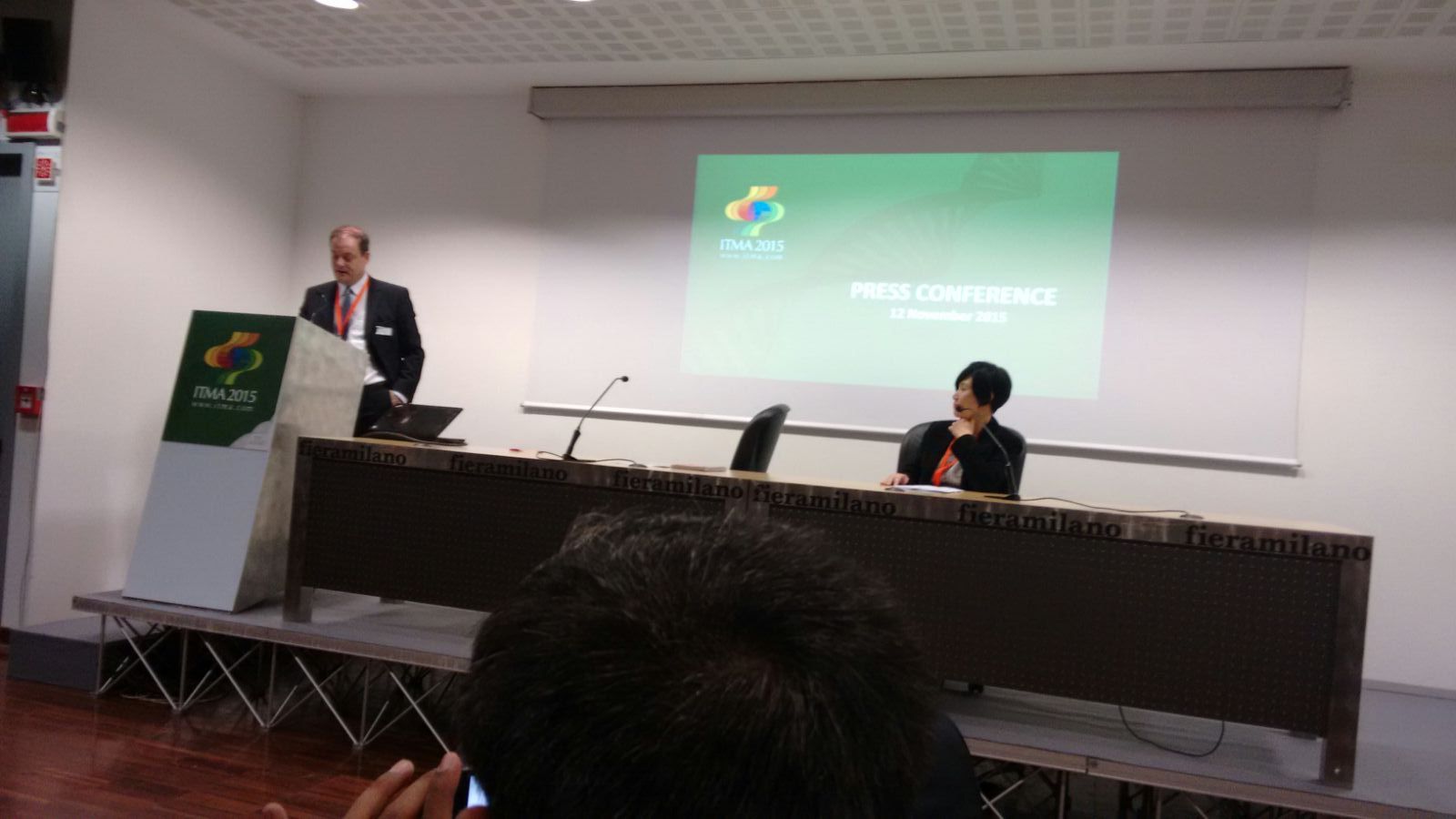 milestone, with 1,691 exhibitors, the maximum so far in 64 years of history of ITMA, 20 per cent larger than 2011 exhibition. Opening at the Fiera Milano Rho today, the 17th edition of ITMA has 1,691 exhibitors from 46 countries and economies. The previous record was set by ITMA 2007 when 1,451 exhibitors from 38 countries took part in the exhibition.
milestone, with 1,691 exhibitors, the maximum so far in 64 years of history of ITMA, 20 per cent larger than 2011 exhibition. Opening at the Fiera Milano Rho today, the 17th edition of ITMA has 1,691 exhibitors from 46 countries and economies. The previous record was set by ITMA 2007 when 1,451 exhibitors from 38 countries took part in the exhibition.
The theme of ITMA 2015 is 'Master the Art of Sustainable Innovation'. The exhibition is not only a mega technology showcase; it also features initiatives underpinning the focus on sustainability. “As manufacturers realize that investing in sustainable technology is not about saving earth but also this is reducing cost of production” says Charles. Among the new initiatives is the launch of the ITMA Sustainable Innovation Award, the rebranding of the Research and Education Pavilion to Research and Innovation Pavilion, and many knowledge-sharing platforms to drive home the sustainability message.
ITMA 2015 features the largest exhibition so far, with the net exhibit space of over 108,000 square metres, occupying 11 halls of the Fiera Milano Rho fairgrounds, about 20 per cent larger than the 2011 exhibition.As in previous editions,exhibitors from CEMATEX countries occupy the largest space, with 73,830 square metres representing 69 per cent of the total net exhibit space, an increase of 18 per cent increase from the 2011 figure.The largest participating country in terms of space booked is Italy. Italian exhibitors totaled an area of 32,540 square metres, followed by Germany at 21,380 square metres, Switzerland at 5,530 square metres, and Spain with 4,540 square metres.
From non-CEMATEX countries, the four largest groups of participants are from Turkey at 7,590 square metres, China at 5,880 square metres, India at 4,870 square metres, and Japan at 3,960 square metres.The countries fielding the largest contingent of exhibitors at ITMA 2015 are Italy (453 exhibitors), Germany (238 exhibitors), China (184 exhibitors) and India (158 exhibitors).
ITMA 2015 features exhibits clustered into 19 product sectors. The sectors range from spinning, web formation, winding and texturing, weaving, knitting and hosiery, embroidery and braiding, finishing, dyestuffs and chemicals, software, logistics, plant operations, recycling and education to garment making and textile processing, printing and fibre and yarn.The top five sectors being dyeing and finishing which occupies 23 per cent of the space, with 303 exhibitors, spinning with 14 per cent of the space, 290 exhibitors, weaving with 12 per cent of the space, 179 exhibitors, knitting and hosiery, 13 per cent of the space, 128 exhibitors and printing that has 10 per cent of the space, 113 exhibitors.
CEMATEX continues to support research and educational institutes with a grant for the participation in the Research and Innovation Pavilion.The pavilion has 40 participating institutions. Taking centre-stage at the pavilion is the Speakers Platform which will be held from 15 to 17 November. A total of 43 papers on the theme of sustainable innovations, achievements in innovation and technical textiles applications, will be presented at the platform.
A series of complementary events have been organised to meet the needs of textile and garment industry professionals. These key events include, 2nd World Textile Summit, Nonwovens Forum, Textile Colourant and Chemical Leaders Forum, 2BFUNTEX Final Conference, Better Cotton Initiative's Responsible Sourcing Seminar, Digital Textile Conference, EURATEX Convention and SistemaModa Italia Presentation Organised by MP Expositions, ITMA 2015 is expected to draw visitors from over 130 countries. It is held from 12 to 19 November at the Fiera Milano Rho. The next ITMA will be held in Barcelona at Fira de Barcelona Gran Via venue from 20 to 26 June 2019.
World Textile Summit
13 November 2015 -The World Textile Summit (WTS) 2015 will bring together the world's most influential textile business leaders to explore business responses to the international drive for sustainable manufacturing. Hosting the summit is Nadine Dereza – an award-winning journalist. Illustrious speakers include:Franke Henke, Global Vice President of Social &Environtment Affairs, adidas Group,Linda Keppinger, Global Materials Director, Nike Inc., and Roger Yeh, President, Everest Textile Co Ltd.WTS 2015 is organised by CEMATEX, MP Expositions and World Textile Information Network.
Textile Colourant and Chemical Leaders Forum
14 November 2015- Launched at ITMA 2011, the forum was an industry initiative that drew lively participation from dyestuff, colour and chemical professionals from around the world. This year’s forum focuses on sustainable manufacturing vis-à-vis colourants and chemicals. The agenda will addresstopics related to chemical pollution and the environmental issues and how these impact the market place, the response of supply chain; andthe trends and/or game changers moving forward.
Nonwovens Forum at ITMA
16 November 2015- Jointly organised by EDANA, the international association for the nonwovens and related Industries and MP, the forum features topics relating to applications and technologies, as well as added value ingredients and finishing for nonwovens. Jacques Prigneaux, Market Analysis and Economic Affairs Director at EDANA, will also touch on production figures, trends and forecast, and international trade dynamics for the nonwovens sector.




